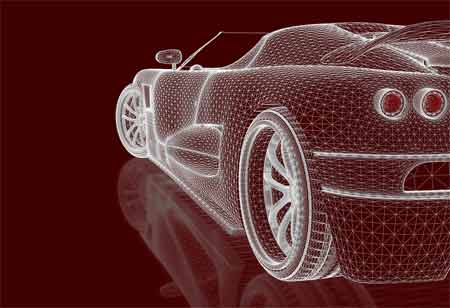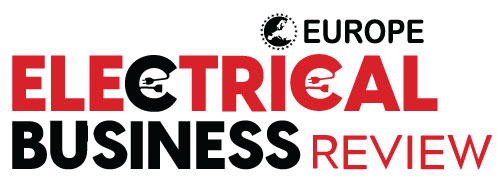Thank you for Subscribing to Electrical Business Review Weekly Brief
I agree We use cookies on this website to enhance your user experience. By clicking any link on this page you are giving your consent for us to set cookies. More info
Understanding the Long-Term Benefits of High-Quality Electrical Enclosures
High-quality electrical enclosures are essential for modern businesses.

By
Electrical Business Review | Thursday, January 30, 2025
Stay ahead of the industry with exclusive feature stories on the top companies, expert insights and the latest news delivered straight to your inbox. Subscribe today.
High-quality electrical enclosures are essential for modern businesses. They enhance safety, extend equipment lifespan, manage heat, optimize performance, and ensure compliance with industry standards. By reducing risks, conserving energy, and supporting sustainability, they play a key role in maintaining efficient and safe operations.
FREMONT, CA: In today’s rapidly evolving technological landscape, ensuring the safety and reliability of our electrical systems is more crucial than ever. This underscores the importance of robust protective measures, particularly the use of high-quality electrical enclosures. While they may seem more expensive upfront compared to cheaper alternatives, a closer examination of the costs and benefits reveals their true value, offering far more than just basic safety.
Benefits of High-Quality Enclosures
Premium enclosures ensure enhanced safety through the use of superior materials and rigorous testing, providing increased resistance to physical damage, corrosion, and environmental hazards. This commitment to durability reduces the risk of electrical accidents, equipment failures, and downtime, ultimately safeguarding both personnel and valuable assets.
Moreover, these high-quality enclosures contribute to an improved equipment lifespan by offering superior protection against dust, moisture, and extreme temperatures. This results in a significant extension of equipment life, reducing long-term replacement costs and minimizing maintenance requirements.
In addition to safety and longevity benefits, advanced enclosures often feature thermal management capabilities, optimizing equipment cooling and enhancing energy efficiency. This leads to cost savings on electricity bills and a reduced environmental footprint, aligning with sustainable practices.
Well-designed enclosures also play a crucial role in increasing operational efficiency by facilitating easy access to equipment for maintenance and repairs. This minimizes downtime, boosts operational efficiency, and translates into increased productivity and profitability for organizations.
Furthermore, premium enclosures often comply with stringent industry standards and regulations, mitigating legal risks and potential fines associated with non-compliance. This commitment to meeting and exceeding regulatory requirements enhances overall compliance and reinforces a commitment to safety and quality.
Lastly, the aesthetic appeal of premium enclosures, available in various designs and finishes, contributes to a professional and organized appearance for facilities. This attention to detail can enhance brand image and positively impact employee morale, creating a conducive and visually pleasing work environment.
When considering the acquisition of enclosures, it is essential to acknowledge the initial investment involved. High-quality enclosures often command a higher upfront cost in comparison to budget alternatives. Nevertheless, it is imperative to perceive this expenditure as an investment rather than a mere expense, as the superior quality of these enclosures typically translates into enhanced durability, performance, and long-term value. Additionally, it is crucial to recognize that complex enclosures may necessitate specialized installation and maintenance procedures, potentially influencing overall costs. A comprehensive evaluation of the initial investment, as well as an understanding of the installation and maintenance requirements, is necessary for informed decision-making.
To comprehensively evaluate the value proposition, it is imperative to quantify various key elements. Firstly, assess the potential cost implications arising from equipment damage or failure resulting from insufficient protection measures. Additionally, consider the reduction in maintenance costs attributed to the extended lifespan of equipment. Evaluate the energy cost savings achieved through enhanced thermal management practices. Furthermore, analyze the potential gains in productivity and profitability stemming from minimized downtime. Factor in the potential legal costs associated with non-compliance to regulatory standards.
Latest Trends and Information
Smart enclosures, characterized by integrated sensors and communication capabilities, offer a sophisticated solution by furnishing real-time data about equipment health and environmental conditions. This technological advancement facilitates predictive maintenance strategies, ultimately optimizing operational efficiency. Additionally, the industry has witnessed a heightened emphasis on sustainability, driving the creation of enclosures crafted from recycled materials or those with minimal environmental impact. The focus on eco-friendly solutions aligns with broader environmental concerns and encourages responsible manufacturing practices. Furthermore, there is a growing trend among manufacturers to provide customizable enclosures tailored to specific application requirements. This customization ensures optimal protection for the enclosed equipment and also enhances overall functionality, addressing the diverse needs of end-users in various industries.
Although the upfront investment in premium electrical enclosures may seem elevated, a comprehensive cost-benefit evaluation underscores their substantial long-term benefits. These enclosures deliver heightened safety measures, prolonged lifespan of equipment, heightened operational efficacy, and compliance assurance, thereby fostering cost efficiencies, heightened productivity, and a commitment to sustainability. For enterprises prioritizing dependable and effective electrical infrastructure, allocating resources towards high-caliber enclosures represents a judicious strategic choice with enduring returns.








